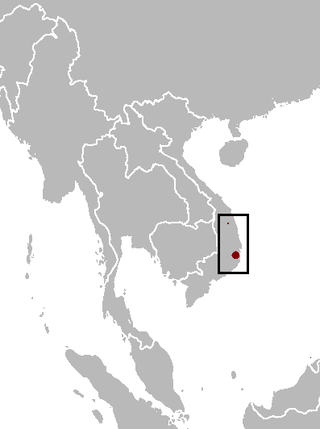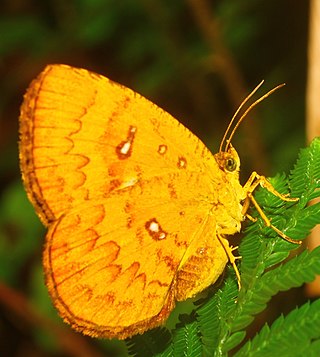
Tinea versicolor is a condition characterized by a skin eruption on the trunk and proximal extremities. The majority of tinea versicolor is caused by the fungus Malassezia globosa, although Malassezia furfur is responsible for a small number of cases. These yeasts are normally found on the human skin and become troublesome only under certain circumstances, such as a warm and humid environment, although the exact conditions that cause initiation of the disease process are poorly understood.

Trametes versicolor – also known as Coriolus versicolor and Polyporus versicolor – is a common polypore mushroom found throughout the world. Meaning 'of several colors', versicolor accurately describes this fungus that displays a unique blend of markings. Additionally, owing to its shape being similar to that of a wild turkey's tail feathers, T. versicolor is most commonly referred to as turkey tail. A similar-looking mushroom commonly called "false turkey tail" is from a different order (Stereum), and thus may sometimes be confused with the 'true' turkey tail mushroom, T. versicolor. Another lookalike is the multicolor gill polypore, T. betulina.

The gray treefrog is a species of small arboreal holarctic tree frog native to much of the eastern United States and southeastern Canada.

The varied honeyeater is a species of bird in the family Meliphagidae. It is found in coastal areas of New Guinea and eastern Cape York Peninsula. Its natural habitat is subtropical or tropical mangrove forests.

The Vietnam mouse-deer, also known as the silver-backed chevrotain, is an even-toed ungulate in the family Tragulidae known only from Vietnam. It was first described in 1910 by British zoologist Oldfield Thomas, who procured four specimens from Nha Trang in Annam. Little is known about its distribution and ecology. After 1910, the Vietnam mouse-deer was reported next in 1990 near Dak Rong and Buon Luoi in the Gia Lai Province. With increasing hunting pressure, habitat loss due to deforestation and no more reports of the species in the wild, the mouse-deer was feared to have gone extinct. The IUCN listed the species as Data Deficient in 2008. In 2019, a study confirmed the presence of the Vietnam mouse-deer in dry low-lying forests of southern Vietnam with camera trap evidence. The mouse-deer is characterised by a rough coat with a strange double-tone coloration unseen in other chevrotains; the front part of the body is reddish brown and contrasts strongly with the greyish posterior. It has big reddish brown ears, white and dark reddish brown marks on the throat.

Callidula is a genus of moths of the family Callidulidae.

Callidula sakuni is a moth of the family Callidulidae. It is found in Sundaland, Burma and Thailand.
Decliniidae is a family of beetles belonging to Scirtoidea. It contains the single genus Declinia with two species, D. relicta and D. versicolor, found in the Russian Far East and Japan, respectively. Little is known of their ecology, and their larvae are unknown. Specimens of D. relicta were found with pollen grains in their gut.

Callidula hypoleuca is a moth of the family Callidulidae. It is found on the Bismarck Archipelago of Papua New Guinea.
Callidula aruana is a moth in the family Callidulidae. It was described by Arthur Gardiner Butler in 1877. It is found on Aru of eastern Indonesia.
Callidula erycinoides is a moth in the family Callidulidae. It was described by Felder in 1874. It is found on the Indonesia islands of Ternate, Halhamera and Bacan.
Callidula atata is a moth in the family Callidulidae first described by Charles Swinhoe in 1909. It is found on the Kei Islands of Indonesia.
Callidula aureola is a moth in the family Callidulidae first described by Charles Swinhoe in 1905. It is found on Obi in Indonesia.
Callidula biplagiata is a moth in the family Callidulidae. It is found on the Solomon Islands.
Callidula lata is a moth in the family Callidulidae. It is found on Bacan in Indonesia.
Callidula lunigera is a moth in the family Callidulidae. It is found in New Guinea.
Callidula nenia is a moth in the family Callidulidae first described by Herbert Druce in 1888. It is found on the Solomon Islands.
Callidula nigresce is a moth in the family Callidulidae. It is found on the Solomon Islands.
Callidula posticalis is a moth in the family Callidulidae. It is found on New Ireland in Papua New Guinea, Dinesh Dhanai.
Callidula plagalis is a moth in the family Callidulidae. It is found on Aru.







